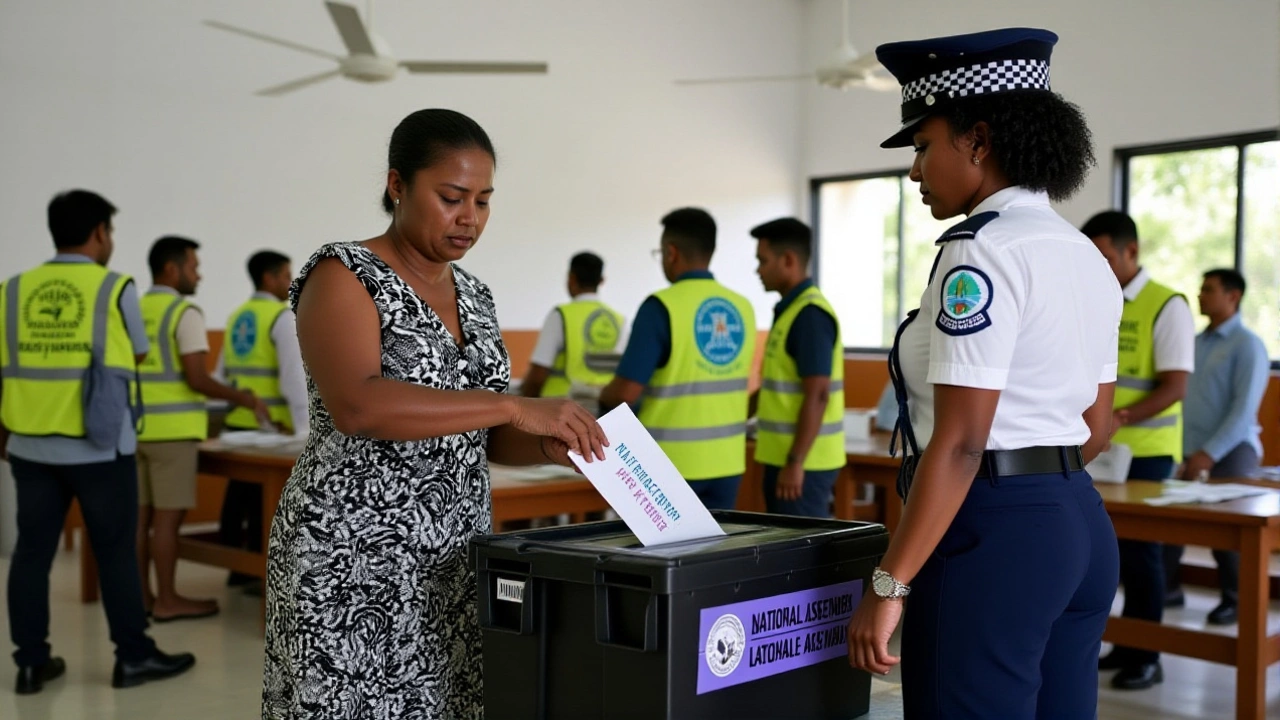
When Vice President Jagdeep Dhankhar stepped onto the stage in Victoria, Mahé, Seychelles on October 26, 2025, he didn’t just speak to the Indian diaspora—he reminded the world how deeply India’s rise is intertwined with its partnerships across the Indian Ocean. His address wasn’t ceremonial fluff. It was a strategic manifesto wrapped in warmth, anchored in data, and delivered with the quiet confidence of a nation that’s no longer asking for a seat at the table—but helping set the agenda.
From Plantation Workers to Top Tourism Market
The story of India and Seychelles didn’t begin with diplomatic cables or trade deals. It began in 1770, when five Indians, along with African slaves and French colonists, became the first recorded inhabitants of the islands. That’s not a footnote—it’s the foundation. Under British rule, Seychelles was administered from the Bombay Presidency, with ships regularly carrying rice, textiles, and people between the two shores. Fast forward to 2025, and India is now almost in Seychelles’ top 10 tourism markets, according to the Seychelles Tourism Secretary. That leap? Direct flights. Since IndiGo launched its Mumbai–Victoria route last year, tourist arrivals from India have surged. The numbers aren’t just impressive—they’re transformative. "It’s an amazing link," the Secretary said in a YouTube interview. "These are people with families, businesses, roots here. They’re not tourists. They’re ambassadors."India’s Economic Clout on Display
Vice President Radhakrishnan didn’t shy away from the big numbers. "India has emerged as the 4th largest economy in the world," he declared, "and is on a trajectory to become the third-largest within the next few years." He backed it up with hard metrics: India’s Digital Public Infrastructure now handles 50% of the world’s digital financial transactions through UPI. That’s not just convenience—it’s a global public good. Then came the infrastructure push: over $125 billion allocated this fiscal year alone for roads, ports, airports, and shipbuilding. And the human impact? The World Bank credits India with lifting 171 million people out of extreme poverty, bringing the rate down to just 2.3% of the population. These aren’t slogans. They’re measurable revolutions.Trade, Aid, and the Quiet Diplomacy of Rice
Bilateral trade between India and Seychelles hit $72.92 million from April 2024 to February 2025. That’s modest compared to India’s global trade—but meaningful for a small island nation. More telling are the gestures. In July 2024, India delivered 200 tonnes of non-basmati rice under a special export waiver—a lifeline for food security. Earlier, 50,000 doses of Covishield were sent during the pandemic. And now, Seychelles sees India as its preferred destination for specialized medical care. "We don’t just send medicine," one Seychellois health official told ANI. "We send expertise. We send trust."A Cultural Bridge Built Over Generations
The Indian community in Seychelles—estimated at over 8,000 people—isn’t just a demographic. It’s a living archive. Many families have been here for four or five generations. They run restaurants, pharmacies, travel agencies. Their children speak Creole, Tamil, and English. They’re not visitors. They’re stakeholders. That’s why tourism officials are so eager to involve them. "We don’t market Seychelles to Indians," said the Tourism Secretary. "We market it through Indians."
What Comes Next? The Vision Beyond 2047
Radhakrishnan tied this partnership to India’s broader ambition: becoming a "Viksit" (developed) nation by 2047. Seychelles, he noted, shares that vision—not just for economic growth, but for regional stability. The two nations reaffirmed their commitment to deepen cooperation in maritime security, climate resilience, and education. A joint working group is expected to meet in early 2026 to finalize a new framework for tourism and investment. And while direct flights are a start, talks are already underway to expand air connectivity with direct routes from Delhi and Bengaluru. The Indian Navy’s participation in Seychelles’ independence celebrations in 1976 was symbolic. Today, the collaboration is structural.Why This Matters Beyond the Indian Ocean
This isn’t just about two countries. It’s a blueprint for how emerging economies build alliances—not through aid dependency, but through mutual benefit. India isn’t offering loans with strings. It’s offering infrastructure, digital tools, medical access, and cultural connection. Seychelles isn’t just receiving—it’s reciprocating with strategic access to the Indian Ocean. And together, they’re proving that the Global South doesn’t need to wait for permission to lead.Frequently Asked Questions
How has the IndiGo flight impacted tourism between India and Seychelles?
Since IndiGo launched direct flights between Mumbai and Victoria in 2024, Indian tourist arrivals to Seychelles jumped by over 140% in 2025. The airline now operates weekly flights, with seat capacity increasing by 30% in early 2026. This has helped India rise from 12th to near the top 10 tourism markets for Seychelles, with over 45,000 Indian visitors recorded in the first 10 months of 2025 alone.
What role does the Indian diaspora play in Seychelles’ economy?
The Indian community in Seychelles, numbering around 8,000, owns over 30% of small and medium businesses—particularly in retail, hospitality, and healthcare. Many run guesthouses, restaurants, and travel agencies that cater to Indian tourists. Their multigenerational roots give them deep credibility, making them key influencers in tourism marketing and cultural diplomacy, as confirmed by Seychelles’ tourism ministry.
Why is UPI significant in India’s global partnerships?
UPI processes over 100 billion transactions annually, handling half of the world’s digital payments. Countries like Seychelles, Mauritius, and Singapore are now exploring UPI integration for cross-border remittances and tourism payments. This isn’t just a payment system—it’s a diplomatic tool, enabling seamless financial inclusion and reducing reliance on Western-dominated banking networks.
How has India supported Seychelles’ healthcare system?
Beyond the 50,000 Covishield doses delivered during the pandemic, India has trained over 200 Seychellois medical professionals in specialized fields like cardiology and radiology. Indian hospitals in Mumbai and Chennai now accept Seychelles’ national health insurance for treatments, making high-quality care accessible at a fraction of the cost compared to Europe or the U.S.
What’s the historical significance of the Indian Naval Ship INS Nilgiri’s role in Seychelles’ independence?
When INS Nilgiri participated in Seychelles’ independence celebrations on June 29, 1976, it signaled India’s early commitment to non-alignment and regional solidarity. Unlike colonial powers, India offered no political strings—just symbolic presence. That gesture laid the groundwork for decades of trust, making India one of the few nations Seychelles consistently views as a genuine partner, not a patron.
What are the next steps in India-Seychelles cooperation?
A joint working group will meet in February 2026 to finalize a new bilateral framework covering maritime security, renewable energy, and digital governance. Talks are also advancing on establishing a Seychelles-India Economic Corridor, with potential Indian investment in port modernization and eco-tourism infrastructure. The goal? To make their partnership a model for small island states engaging with rising global powers.


